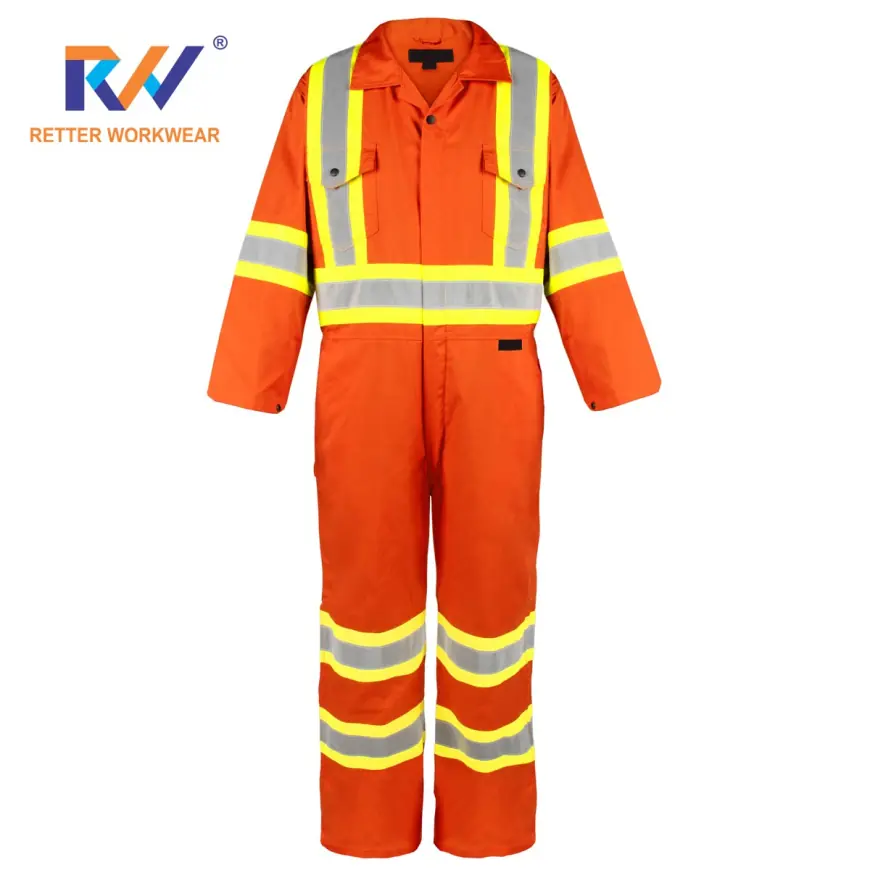How Are Safety Coverall Manufacturers Innovating For Hazardous Work Environments?

In hazardous industries, workwear is much more than a company uniform. It is the first and most significant layer of protection between workers and an array of life-threatening risks. High stakes can challenge any oil-girded refinery, construction site, chemical plant, or offshore platform. Safety doesn't mean that the clothes worn are stiff, bulky, and uncomfortable, as they used to be a decade ago. Even a small imperfection in personal protective gear could lead to grievous injuries or worse. Here is how the modern Safety Coverall Manufacturers redefine the future of hazardous work safety.
Intelligent Fabrics That React To Danger
The most exciting new technologies in protective workwear come from intelligent fabrics-those capable of actively responding to dangerous situations. These materials are not passive barriers; they signal and adapt in real time. Some, for instance, change color under certain conditions, those requiring identifiable changes with specific chemicals, alerting the unaware worker to otherwise invisible danger. Some are designed not to be woven loose but to constrict their weave more like a heat barrier, which, incidentally, is a time of acute need for additional fire protection. Adaptability like this could mean the difference between a near miss and a serious injury.
Development Awards Lighter & Cooler Fabrics
Modern FR coveralls are not that heavy, suffocating sweat-sponges of the past. Trusted Fire Retardant Coverall Manufacturers have been doing a tremendous job with the most modern fire-retardant fabrics that have fire-fighting proficiency, can also self-extinguish without losing this functionality even after being washed many times. Lightweight, breathable fibers now incorporate moisture-wicking technology, pulling moisture from the skin and reducing the risk of steam burns growing into a serious hazard in hot situations. By making protective clothing comfortable, it ensures better compliance, as workers will wear such gear when it does not constrict or overly heat their bodies.
Ergonomics & Durability Working Together
A worker's protective coverall is only put on by a person. Indeed, the ergonomic design accommodates this consideration, pre-bent knees and elbows are placed strategically, and adjustable waistbands that allow motion in a natural and unimpeded manner. But that isn't itself. A minor tear or worn-out seam progresses into a safety hazard in an environment. This is why abrasion-resistant coatings, reinforced stitching, and high-stress point reinforcements are relied on by manufacturers. It helps ensure that even worn coveralls can withstand day-to-day wear and tear without compromising their protective capability.
Hazard Protection For Extreme Worksites
There is no longer a need to wear many different items that can cause overheating, restricted movement, and discomfort. The finest FR Coverall Manufacturers, such as Retter Workwear, are now exceeding single-purpose protection, often known as multi-hazard protective gear, which integrates fire protection with other workplace hazards, such as chemical splashes, static discharges, and arc flashes. New fabrics for protective workwear represent pure safety, designed not to shrink in size, ensuring that cuffs, collars, or other points of closure hold securely even after repeated high-heat exposure.
Safety With Sustainability Is A Must
Innovation must not be about protection, but also a lot about responsibility. More manufacturers are taking steps toward eco-friendly production by employing recycled fibers, bio-based fabrics, and low-impact dyeing methods that reduce water and energy use. Some even have garment recycling programs that turn worn-out gear into raw material for new protective clothing. Hazardous workwear does not sacrifice safety for sustainability; these new fabrics have been proven fully consistent and even exceed industry safety standards. Indeed, it is possible to protect both workers and "the planet" at the same time.
The Last Stitch
The evolution of workwear for hazardous environments views that safety should and must go hand-in-hand with innovation. From the light, cooler fabrics that fire-retardant coverall manufacturers offer, multi-hazard protection gear that saves lives, as the industry constantly pushes the boundaries of protective gear. In a risky environment, every stitch, seam, and fiber matters. Each breakthrough makes protective clothing more intelligent, lighter, comfortable, and sturdy, an attempt to change safety from a mere requirement into a robust tool of progress.
What's Your Reaction?
 Like
0
Like
0
 Dislike
0
Dislike
0
 Love
0
Love
0
 Funny
0
Funny
0
 Angry
0
Angry
0
 Sad
0
Sad
0
 Wow
0
Wow
0



















































